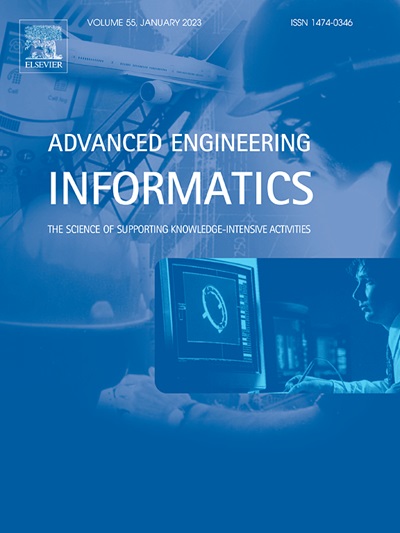Knowledge-enhanced spatial–temporal multi-frequency fusion transformer for plant-wide industrial process monitoring
IF 8
1区 工程技术
Q1 COMPUTER SCIENCE, ARTIFICIAL INTELLIGENCE
引用次数: 0
Abstract
Plant-level industrial process monitoring is critical for ensuring production safety and efficiency. Existing state monitoring models predominantly focus on temporal modeling, neglecting the significance of underlying process structural knowledge and frequency domain information. To address these limitations, we propose a novel knowledge-enhanced spatial–temporal multi-frequency fusion transformer (KSTFformer) for comprehensive plant-wide process monitoring. Unlike existing data-driven methods, KSTFformer integrates prior knowledge with process data to enhance both modeling performance and interpretability. Initially, we decompose the entire process into multiple operating units based on equipment connection relationships, constructing variable correlations as a directed graph. We then design a graph convolution-based structural learning module that captures spatial–temporal dependencies using graph convolutional networks, leveraging the Gumbel-softmax sampling method to learn variable interconnections. Furthermore, a novel multi-band frequency domain feature extractor was innovatively proposed, which refines frequency domain sequences into multiple local sub-sequences and extracts frequency domain characteristics of variables through channel-independent networks. Finally, the model integrates spatial–temporal and frequency domain features through attention mechanism, enhancing anomaly detection capabilities. The proposed method’s effectiveness is validated through two real-world industrial process case studies.
求助全文
约1分钟内获得全文
求助全文
来源期刊

Advanced Engineering Informatics
工程技术-工程:综合
CiteScore
12.40
自引率
18.20%
发文量
292
审稿时长
45 days
期刊介绍:
Advanced Engineering Informatics is an international Journal that solicits research papers with an emphasis on 'knowledge' and 'engineering applications'. The Journal seeks original papers that report progress in applying methods of engineering informatics. These papers should have engineering relevance and help provide a scientific base for more reliable, spontaneous, and creative engineering decision-making. Additionally, papers should demonstrate the science of supporting knowledge-intensive engineering tasks and validate the generality, power, and scalability of new methods through rigorous evaluation, preferably both qualitatively and quantitatively. Abstracting and indexing for Advanced Engineering Informatics include Science Citation Index Expanded, Scopus and INSPEC.
 求助内容:
求助内容: 应助结果提醒方式:
应助结果提醒方式:


